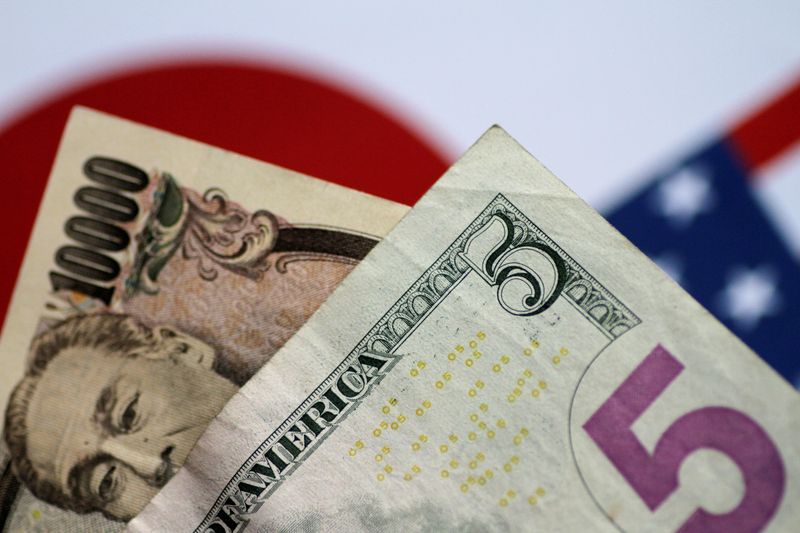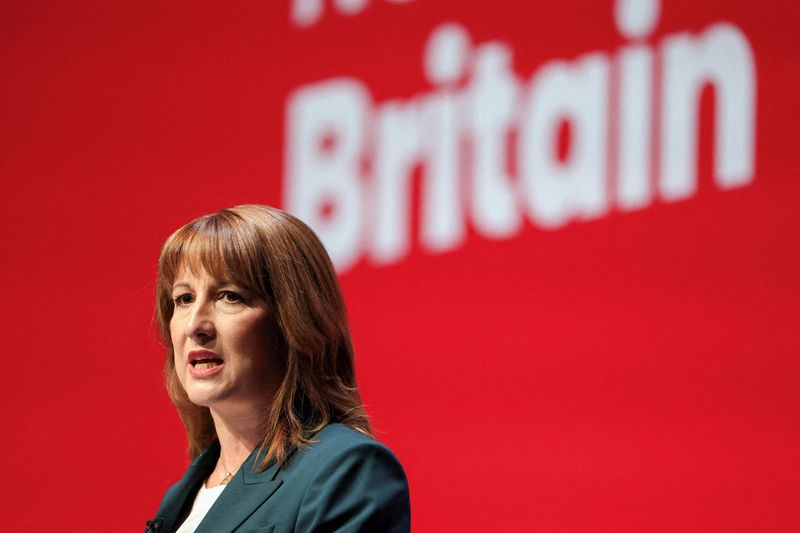Forex
Yen slumps to lowest since 1986, putting traders on red alert

By Gertrude Chavez-Dreyfuss and Harry Robertson
NEW YORK/LONDON (Reuters) -The yen dropped to its lowest against the U.S. dollar since late 1986 on Wednesday, amid a wide interest rate differential between the two economies, keeping the market alert for any sign of intervention from Japanese authorities to boost its currency.
The U.S. dollar rose to as high 160.63, its strongest level since December 1986. The greenback was last up 0.5% at 106.455 yen.
Japan’s low interest rate regime, compared to that of the United States, has continued to hammer the yen. The 10-year Japanese government bond yield was 1.03% on Wednesday, while the was 4.304%.
“The market seems to be front-running itself with respect to BOJ (Bank of Japan) policy. But let’s say the market is not doing that,” said Eugene Epstein, head of structuring for North America at Moneycorp in New Jersey.
“Let’s say they’re not pushing the BOJ. Just the fact that interest rate differentials are what they are between Japan and the U.S., that would be the natural progression anyway,” he said.
So-called carry trade strategies, where investors borrow in low-yielding currencies to invest in higher-yielding ones, have become hugely popular as some countries have raised borrowing costs in recent years.
Although Japan has raised interest rates this year to a range of zero to 0.1%, U.S. rates of 5.25% to 5.5% mean investors are flocking to the higher returns on dollar assets, driving up the currency versus the yen.
Analysts said traders were testing the resolve of Japan’s Ministry of Finance and central bank, who spent $62 billion in late April and early May to support the currency when it fell past 160.
Japan’s top currency diplomat Masato Kanda ramped up his warnings on excessive currency moves on Wednesday, saying authorities were “seriously concerned and on high alert” about the yen’s rapid decline.
“It is generally accepted that the current weakness in the yen is not necessarily justified, therefore believed to be driven by speculators,” Kanda, the vice finance minister for international affairs, told reporters.
“Perhaps a few months ago that would have been heeded more by the market than it is now, because it’s not being backed up by any change in rates,” said Joe Tuckey, head of FX analysis at broker Argentex.
There is a chance of a further rate hike from the Bank of Japan in late July, which could help support the yen. But any durable rally is likely to require Federal Reserve interest rate cuts.
The , which tracks the currency against six peers, rose 0.2% to 105.92.
U.S. new home sales came in weaker than expected. Sales of new U.S. single-family homes dropped to a six-month low in May, falling 11.3% to a seasonally adjusted annual rate of 619,000 units last month. The dollar showed little reaction to the data, which added to growing evidence that the world’s largest economy is slowing down.
Friday’s U.S. personal consumption expenditures index (PCE), the preferred Fed gauge on inflation, will be widely tracked to see whether prices pressures in the economy are trending in the right direction.
A lower-than-expected number could cause traders to raise their bets on Fed rate cuts this year, providing some relief to the yen.
The euro slid 0.3% to $1.0686 after a European Central Bank policymaker talked up the chances of further rate cuts this year, a notably different stance from the Fed’s Michelle Bowman.
ECB governing council member Olli Rehn told Bloomberg that two more cuts this year seemed “reasonable”. That contrasted with Fed Governor Bowman, who said she did not expect any U.S. rate cuts this year.
Elsewhere, Australian inflation accelerated to a six-month high of 4% in May, which had traders scrambling to price in a strong chance of a further rate hike by November. The dollar was last up 0.2% against the U.S. dollar at US$0.6659 .[AUD/]
Sterling fell 0.3% to $1.2646 as the dollar strengthened.
The yuan was also getting squeezed by the dollar’s stubborn strength, with China seemingly having signalled some tolerance for a cheaper currency by gradually weakening the midpoint of the yuan’s daily trading range on the dollar.
The yuan, which has hugged the low side of its band for months, slumped to a seven-month trough on Wednesday of 7.2671 per dollar. [CNY/] The dollar was little changed at 7.2667.
Currency
bid
prices at
26 June
02:27
p.m. GMT
Descripti RIC Last U.S. Pct YTD Pct High Low
on Close Change Bid Bid
Previous
Session
Dollar 105.97 105.67 0.3% 4.54% 106.13 105.
index 6
Euro/Doll 1.0684 1.0715 -0.28% -3.2% $1.0718 $1.0
ar 666
Dollar/Ye 160.58 159.62 0.52% 13.76% 160.62 159.
n 705
Euro/Yen 1.0684 171.06 0.3% 10.24% 171.64 170.
86
Dollar/Sw 0.8973 0.8947 0.3% 6.62% 0.8983 0.89
iss 48
Sterling/ 1.2635 1.2686 -0.38% -0.69% $1.2694 $1.0
Dollar 666
Dollar/Ca 1.3686 1.3659 0.21% 3.26% 1.3704 1.36
nadian 51
Aussie/Do 0.665 0.6648 0.05% -2.45% $0.6689 $0.6
llar 636
Euro/Swis 0.9586 0.9583 0.03% 3.24% 0.96 0.95
s 62
Euro/Ster 0.8453 0.8444 0.11% -2.48% 0.8456 0.84
ling 34
NZ 0.6082 0.612 -0.55% -3.68% $0.6128 0.60
Dollar/Do 76
llar
Dollar/No 10.6821 10.6123 0.66% 5.4% 10.7127 10.5
rway 994
Euro/Norw 11.4132 11.373 0.35% 1.69% 11.4275 11.3
ay 39
Dollar/Sw 10.5785 10.5065 0.69% 5.08% 10.6175 10.4
eden 833

Euro/Swed 11.3016 11.256 0.41% 1.59% 11.3251 11.2
en 399

 Forex3 years ago
Forex3 years agoForex Today: the dollar is gaining strength amid gloomy sentiment at the start of the Fed’s week

 Forex3 years ago
Forex3 years agoUnbiased review of Pocket Option broker

 Forex3 years ago
Forex3 years agoDollar to pound sterling exchange rate today: Pound plummeted to its lowest since 1985

 Forex3 years ago
Forex3 years agoHow is the Australian dollar doing today?

 Cryptocurrency3 years ago
Cryptocurrency3 years agoWhat happened in the crypto market – current events today

 World3 years ago
World3 years agoWhy are modern video games an art form?

 Commodities3 years ago
Commodities3 years agoCopper continues to fall in price on expectations of lower demand in China

 Economy3 years ago
Economy3 years agoCrude oil tankers double in price due to EU anti-Russian sanctions
























